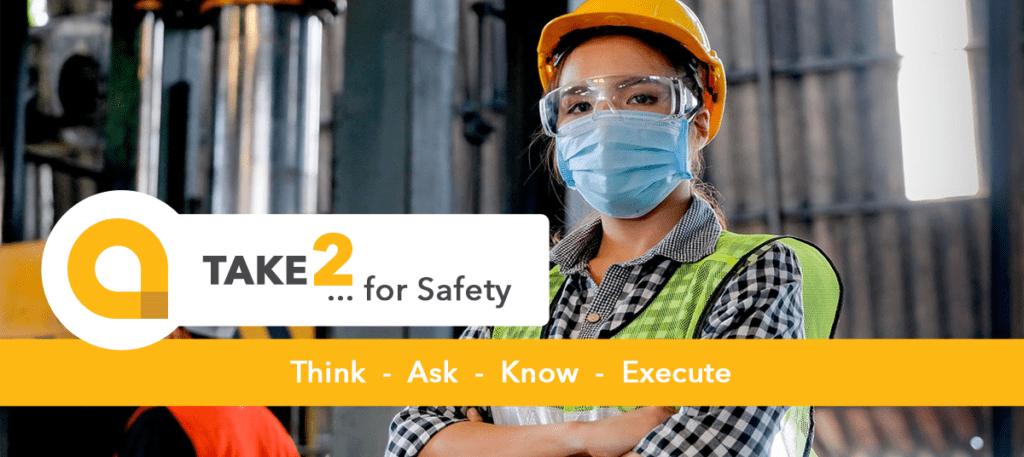Take 2 for Safety: Think – Ask – Know – Execute
No matter what your job is, we expect everyone to work with safety in mind. As part of our TAKE (T = Think, A = Ask, K = Know, E = Execute) 2 initiative, which reminds us all to pause, evaluate our surroundings, and re-adjust to avoid any potential hazards. We all want to go to come home from work in the same conditions we left home.
What Does TAKE 2 for Safety Mean to You?
It means taking the time to recognize the hazard(s) and taking the appropriate steps to protect yourself, your fellow co-workers, clients, customers, family and friends.
Everyone should develop the habit of thinking about the safety process during a work shift, on the way home, at home or on vacation. Thus, think about safety concerns before you start any job, when you go to do something that is potentially dangerous, when putting on occupational safety equipment and by making sure machine guards are in place to help reduce the risk of injury.
Hot-melt Adhesives
Hot-melt adhesives are immensely versatile, used in packaging, labeling, woodworking, product assembly, and much more. Not being attentive while using hot-melt adhesives can result in serious burns and other possible injuries. Staying safe while using hot-melt adhesives is largely a matter of following common sense and a few best practices.
Personal Protective Equipment (PPE)
One of the best ways to stay safe while using hot-melt equipment is by donning personal protective equipment (PPE). Get in the habit of wearing safety glasses, gloves, and any other protective equipment every time hot-melt equipment is used.
Read Your Manuals
Familiarizing yourself with your hot-melt equipment operator’s manual is an investment in your safety. Always refer to the operator’s manual. It not only tells the best way to set-up and maintain the equipment, but also outlines safety best practices and preventative maintenance.
Pay Close Attention
Many accidents involving hot-melt adhesive happen simply because the operator shifts their focus away from the gluing task. It only takes a moment of distraction to lead to a hot-melt disaster. Continued safety relies on the ability to concentrate on the gluing task – the think part of TAKE 2 for Safety.
Check Equipment Before Starting
It’s a good idea for hot-melt operators to visually inspect their equipment for signs of damage or disrepair prior to starting an adhesive task. Performing an equipment check before starting hot-melt adhesive work will help prevent accidents due to faulty machinery.
Preventive Maintenance
Maintaining peak performance helps avoid emergency maintenance calls which can cause hurried, unsafe repair situations, including your own personal safety. Periodical cleaning helps maintain the integrity of the equipment and performance. APPLIED Adhesives’ factory trained, equipment service technicians and support team are strategically located in North America, including Mexico and Canada, where we proudly provide preventative and critical services, including contract and preventative maintenance agreements. Learn more.
Manufacturing Site
Before entering a manufacturing site – know the safety policies, what to do in an emergency, and have the proper personal protective equipment (PPE).
Prevent Accidents and Injury
Remembering to TAKE 2 for safety can help prevent accidents and injury. Don’t forget to implement these important steps before working on any type of adhesive dispensing equipment. And, to learn more about the equipment solutions we offer at APPLIED Adhesives, click here.

